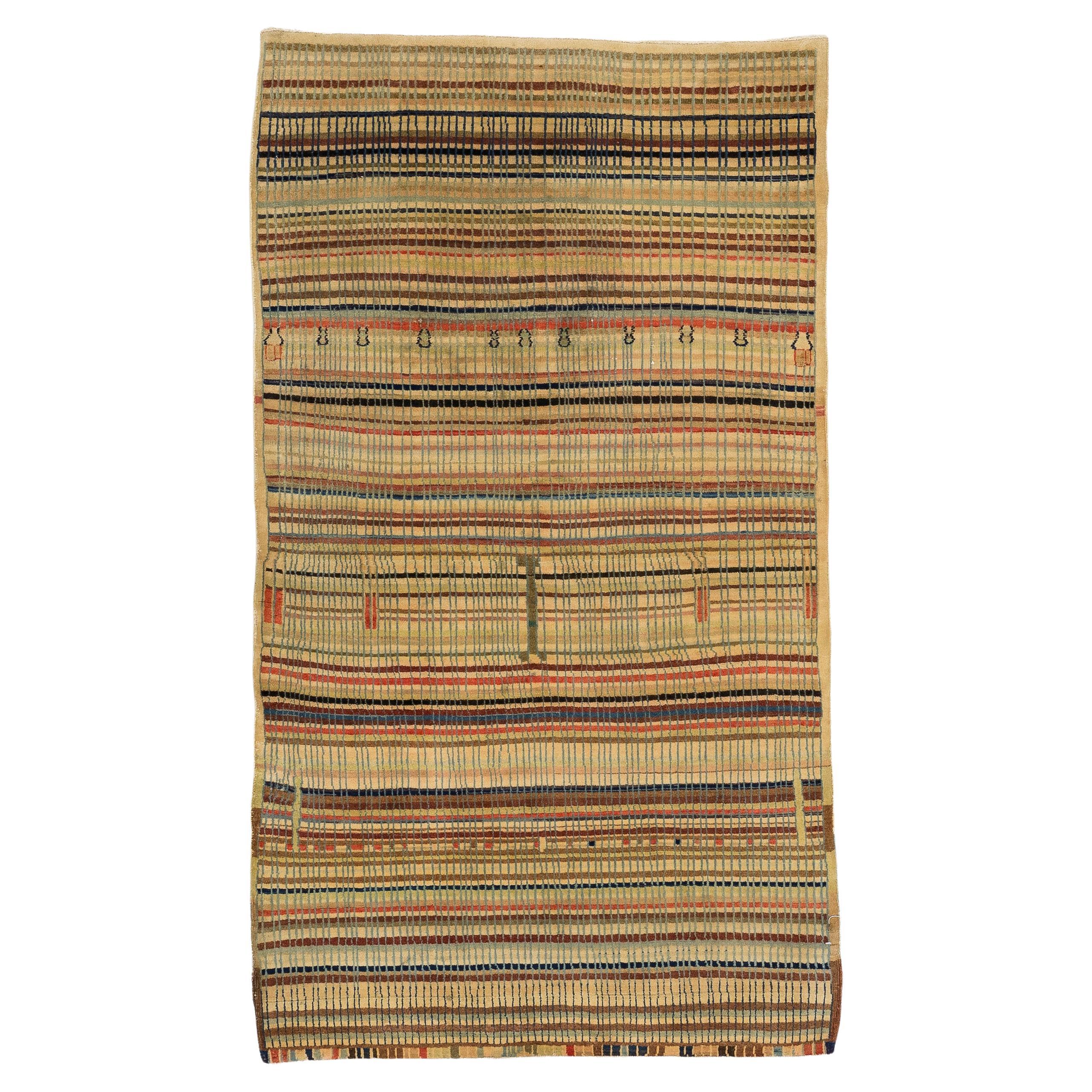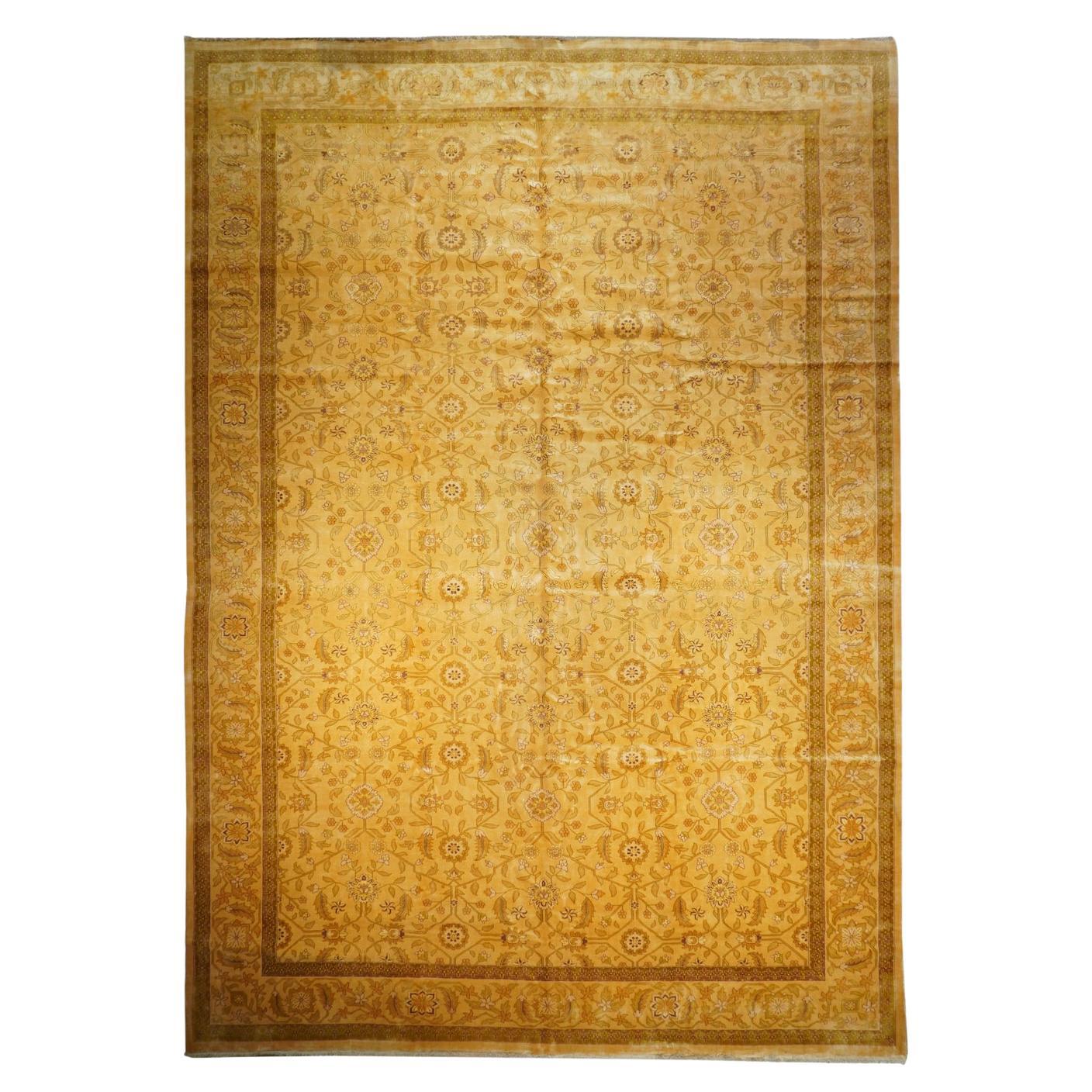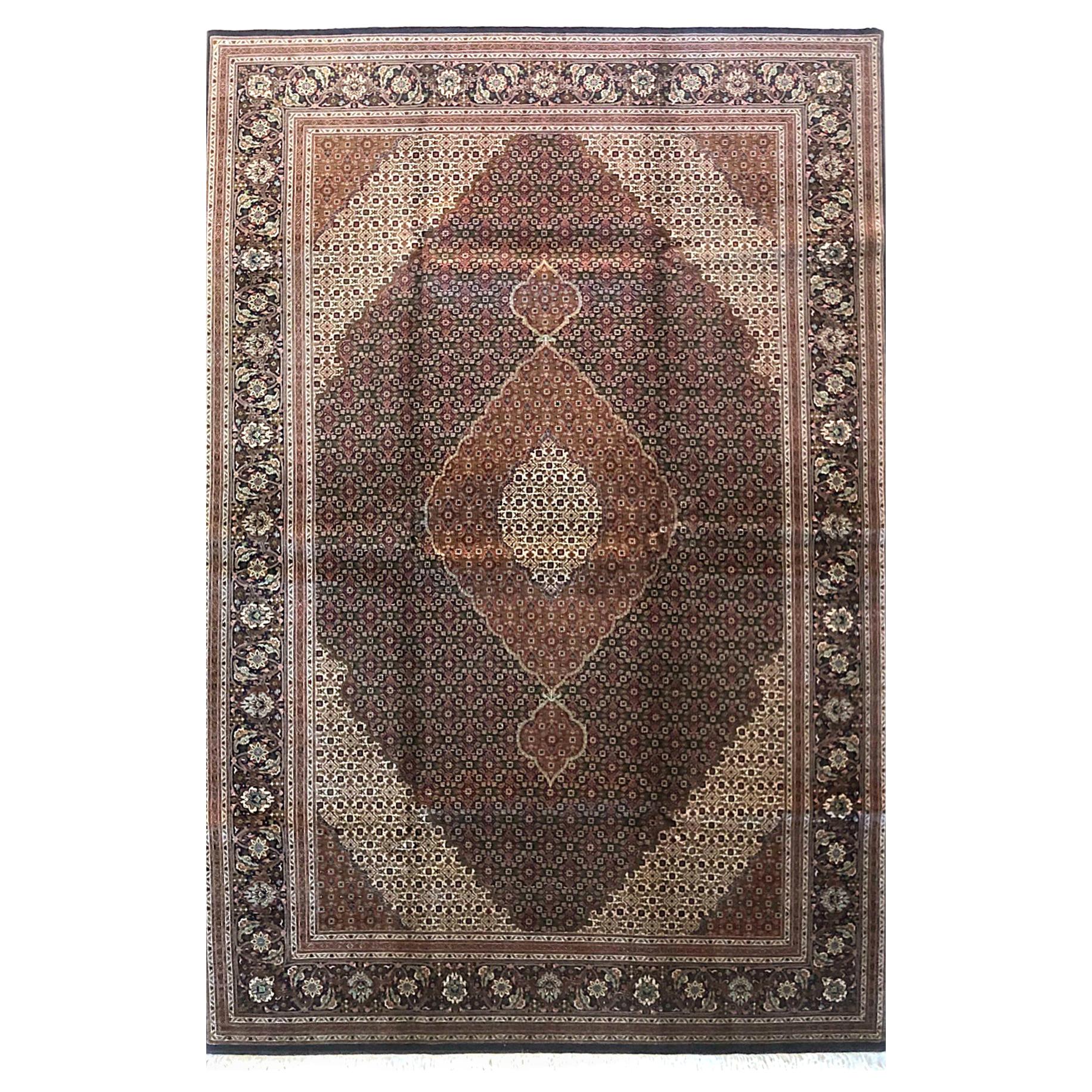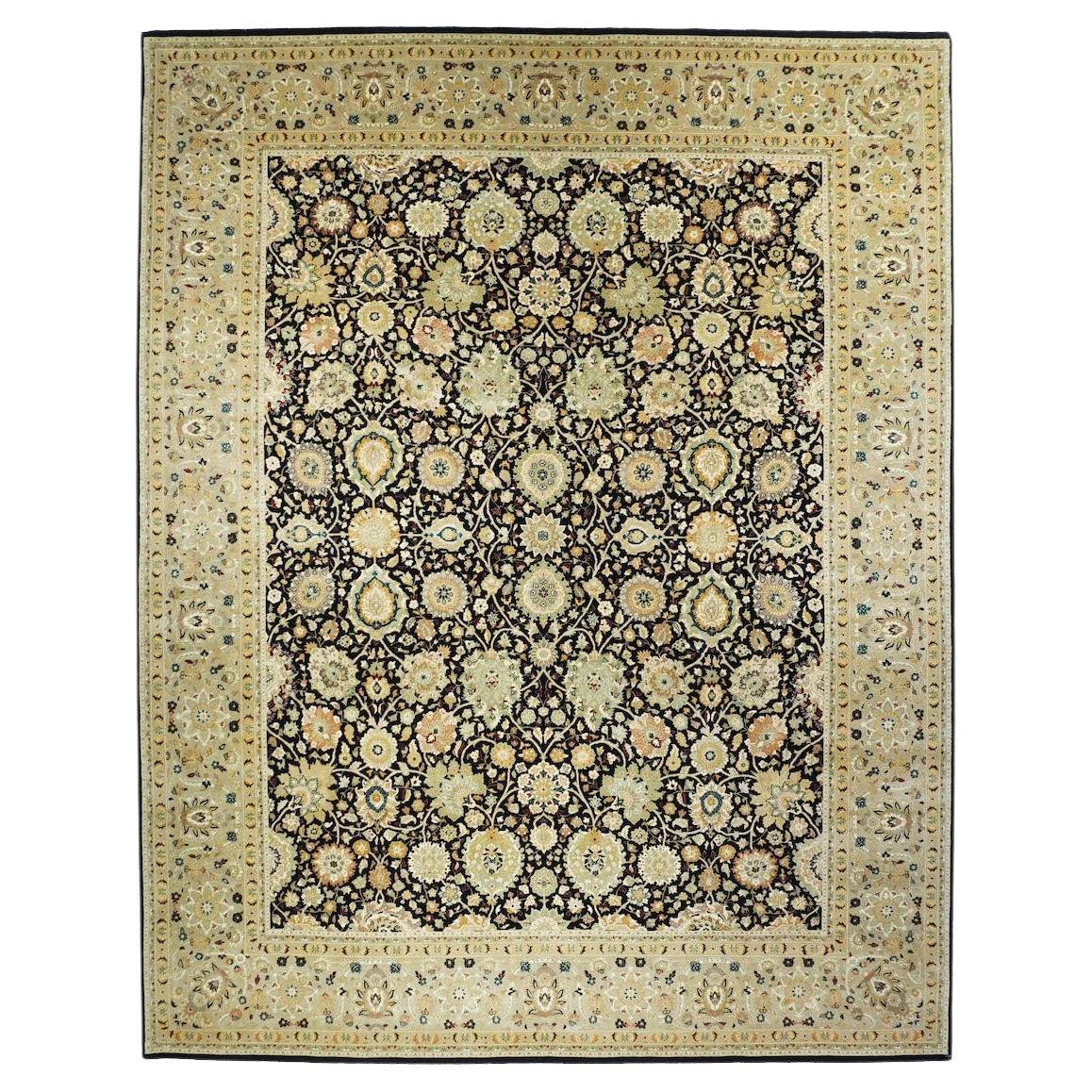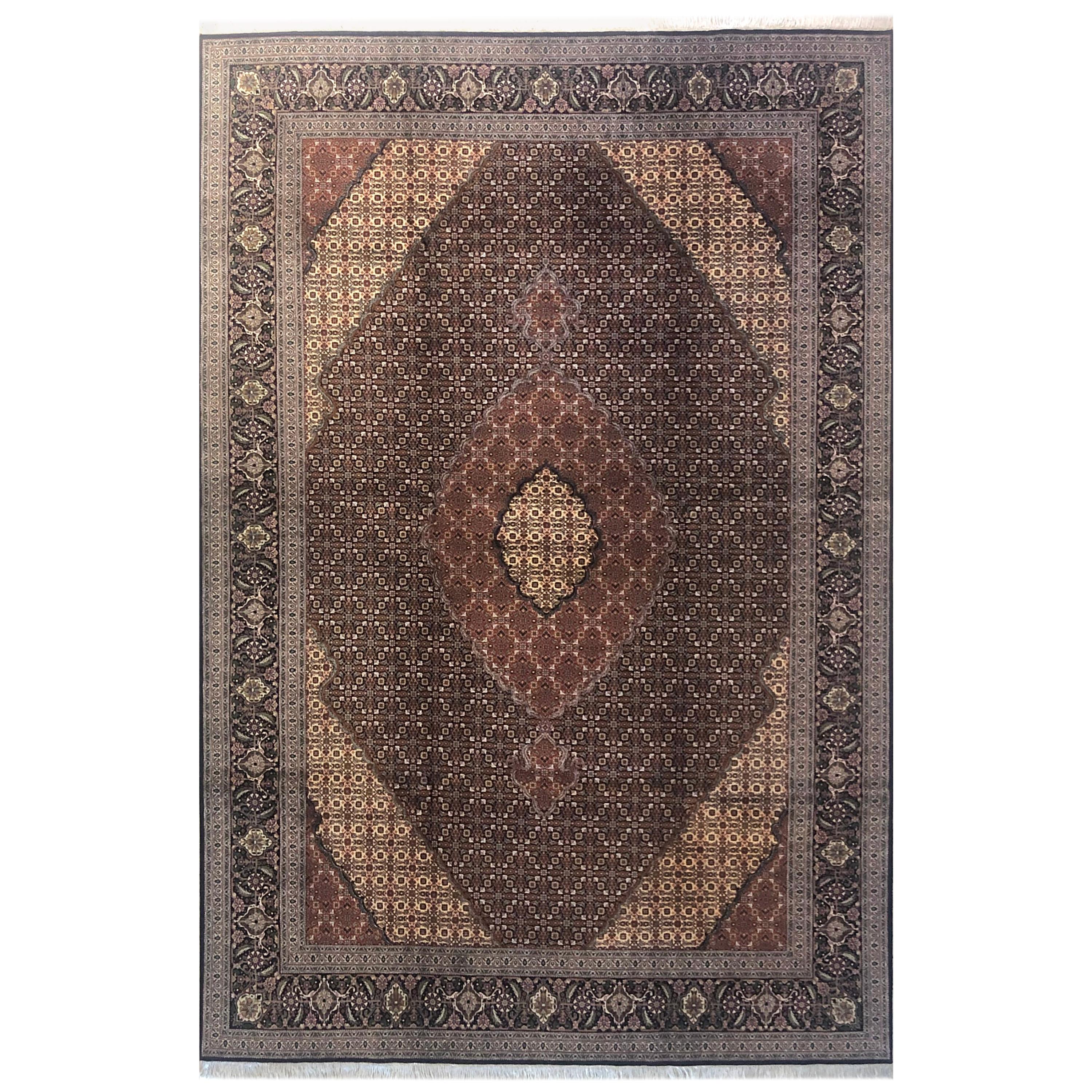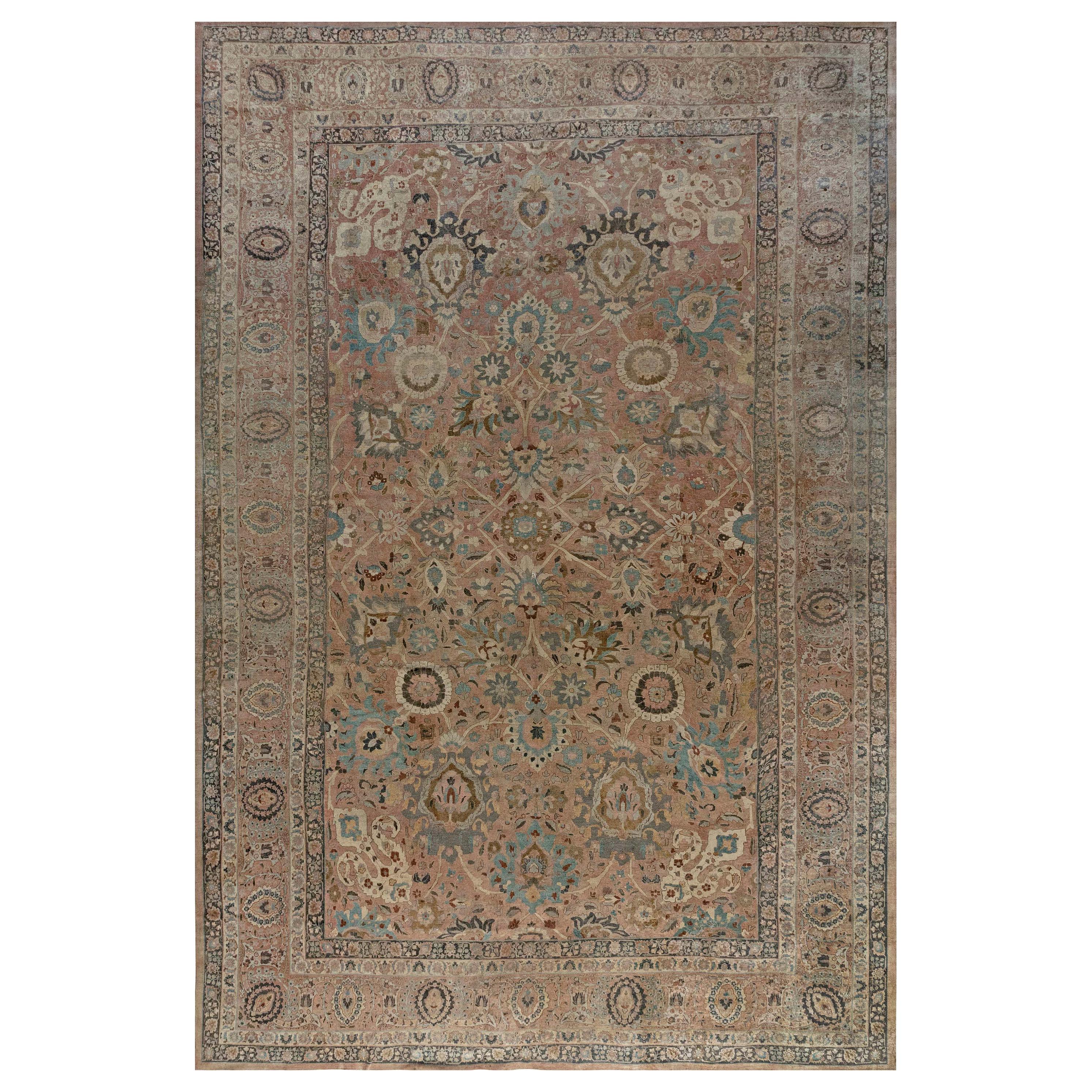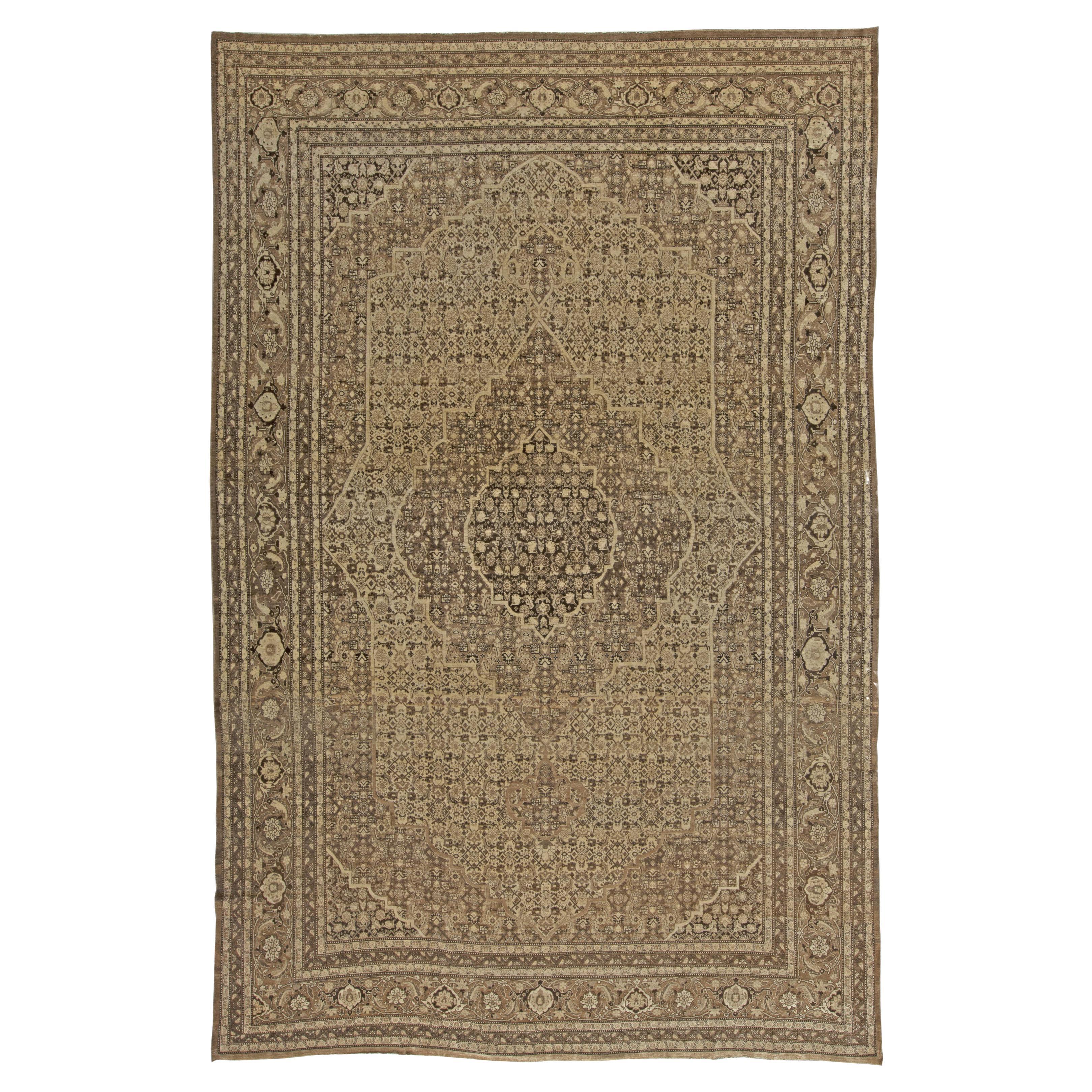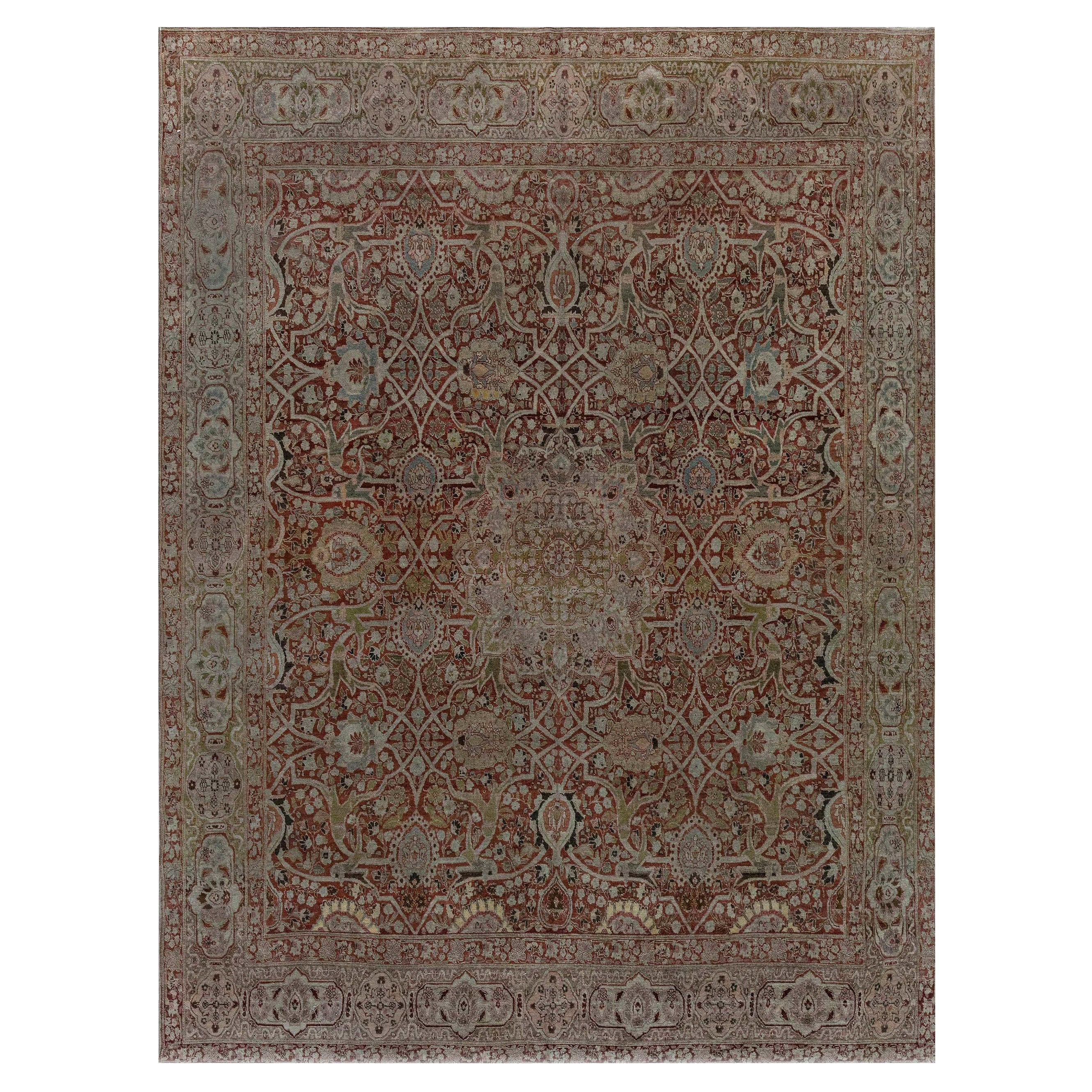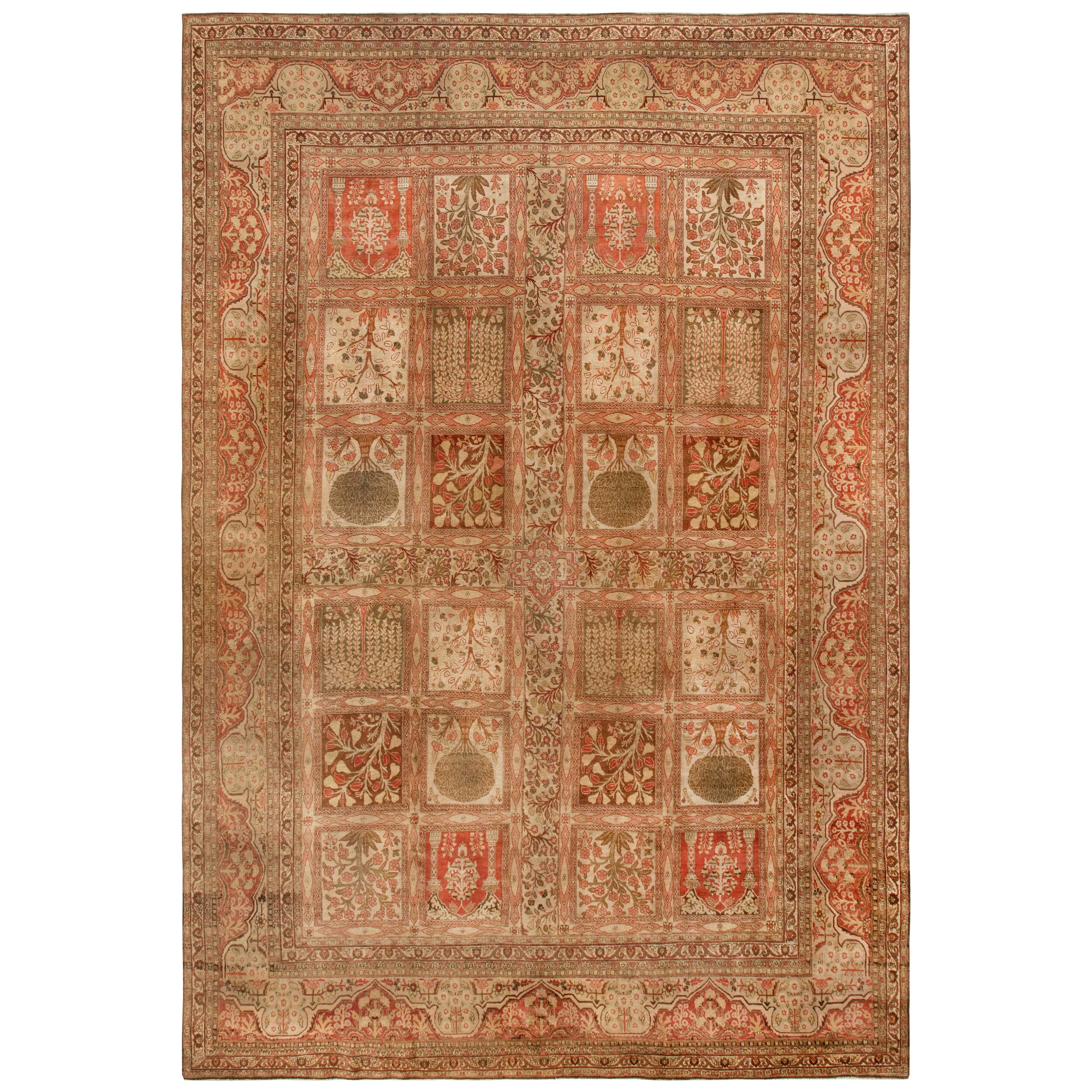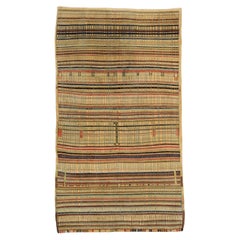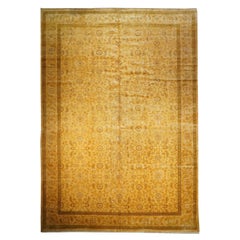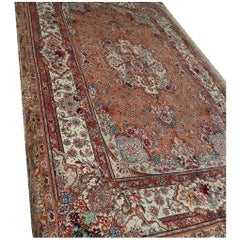
Salari Design Onion Color Hand-Knotted Genuine Persian Tabriz Rug
View Similar Items
1 of 4
Salari Design Onion Color Hand-Knotted Genuine Persian Tabriz Rug
About the Item
- Dimensions:Width: 78.75 in (200 cm)Length: 120.08 in (305 cm)
- Sold As:Set of 2
- Style:Tabriz (In the Style Of)
- Materials and Techniques:
- Period:
- Date of Manufacture:2017
- Production Type:New & Custom(One of a Kind)
- Estimated Production Time:Available Now
- Condition:
- Seller Location:Cremorne, AU
- Reference Number:1stDibs: LU305338806493
You May Also Like
- Hand Knotted Persian Tabriz Accent RugLocated in Dallas, TXHand knotted Persian accent rug made from fine wool and all-natural vegetable dyes that are safe for people and pets. This beautiful piece features simple geometric patterns in vario...Category
Early 20th Century Persian Tabriz Persian Rugs
MaterialsWool
$1,575 Sale Price25% Off - Fine Indo Tabriz Persian Design Indian Rug, Hand KnottedLocated in New York, NYFine Indo Tabriz Persian design Indian rug, hand knotted Design: Floral Carpets are an integral part of Indian craft traditions. The tradition of carpet weaving in India is c...Category
2010s Indian Tabriz Indian Rugs
MaterialsWool
- Fine Pak Persian Tabriz Design Rug, Wool, Hand KnottedLocated in New York, NYFine Pak Persian Tabriz Design rug, wool, hand knotted Design: Floral all-over A Pakistani rug (Pak Persian Rug or Pakistani carpet) is a type of handmade floor-covering textile traditionally made in Pakistan. The art of weaving developed in the region comprising Pakistan at a time when few other civilizations employed it. Excavations at Moenjodaro and Harappa - ancient cities of the Indus Valley civilization - have established that the inhabitants used spindles and spun a wide variety of weaving materials. Some historians consider that the Indus Valley civilization first developed the use of woven textiles. Carpet weaving may have been introduced into the area of present-day Pakistan as far back as the 11th century with the coming of the first Muslim conquerors, the Afghan Ghaznavids and the Ghaurids. It can with more certainty be traced to the beginning of the Mughal Dynasty in the early 16th century, when the last successor of Timur, Babur, extended his rule from Kabul, Afghanistan to Dhaka, Bangladesh and founded the Mughal Empire. Under the patronage of the Mughals, local craftsmen adopted Persian techniques and designs. Carpets woven in the Punjab at that time (often called Lahore carpets today) made use of motifs and decorative styles found in Mughal architecture. Photograph of Carpet Weavers in Karachi Jail - 1873 During the Mughal period, the carpets made on the South Asia became so famous that demand for them spread abroad. These carpets boasted distinctive designs and high knot densities. Carpets made for the Mughal emperors, including Jahangir and Shah Jahan, were of the finest quality. Under Shah Jahan's reign, Mughal carpet-weaving took on a new aesthetic and entered its classical phase. The carpets woven in Lahore were the first to reach European markets, including England, as far back as 17th century. During the British Colonial era, prison weaving was established in district and female jails in cities such as Lahore and Karachi. Carpet-weaving outside of jails was revived after the independence when Pakistan's carpet-weaving industry flourished. At present, hand knotted carpets are made by Afghan refugees residing in Pakistan, making carpets and one of the country's leading export products. Hand knotted rug manufacture is Pakistan's second-largest cottage and small industry. The craftsmen have the capacity to produce any type of carpet using all the popular motifs of guls, medallions, paisleys (botehs), traceries, and geometric designs in various combinations. Pak Persian Persian inspired curvilinear and/or floral designs, usually styled from old Kashan...Category
Vintage 1970s Tabriz Central Asian Rugs
MaterialsWool, Silk
- Authentic Persian Hand Knotted Medallion Fish Design 'Mahi' Tabriz RugLocated in San Diego, CATabriz rugs are well known for their excellent weaving and design. One of the very famous patterns of Tabriz rugs are fish design known is Mahi. This beautiful piece has wool and sil...Category
Vintage 1970s Persian Tabriz Persian Rugs
MaterialsWool, Cotton, Silk
$9,450 Sale Price30% Off - Pakestan Rug Tabriz Design, Hand KnottedLocated in New York, NYPakistan rug Tabriz design, hand knotted Design: Tabriz Color: Black border, beige The art of weaving developed in the region comprising Pakistan at a time when few other civilizations employed it. Excavations at Moenjodaro and Harappa, ancient cities of the Indus valley civilization, have established that the inhabitants used spindles and spun a wide variety of weaving materials. Some historians consider that the Indus Valley civilization first developed the use of woven textiles. Carpet weaving may have been introduced into the area of present-day Pakistan as far back as the eleventh century with the coming of the first Muslim conquerors, the Afghan Ghaznavids and the Ghaurids. It can with more certainty be traced to the beginning of the Mughal Dynasty in the early 16th century, when the last successor of Timur, Babur, extended his rule from Kabul, Afghanistan to Dhaka, Bangladesh and founded the Mughal Empire. Under the patronage of the Mughals, local craftsmen adopted Persian techniques and designs. Carpets woven in the Punjab at that time (often called Lahore carpets today) made use of motifs and decorative styles found in Mughal architecture. Photograph of carpet weavers in Karachi Jail, 1873 During the Mughal period, the carpets made on the South Asia became so famous that demand for them spread abroad. These carpets boasted distinctive designs and high knot densities. Carpets made for the Mughal emperors, including Jahangir and Shah Jahan, were of the finest quality. Under Shah Jahan's reign, Mughal carpet-weaving took on a new aesthetic and entered its classical phase. The carpets woven in Lahore were the first to reach European markets, including England, as far back as 17th century. During the British colonial era, prison weaving was established in district and female jails in cities such as Lahore and Karachi. Carpet-weaving outside of jails was revived after the independence when Pakistan's carpet-weaving industry flourished.[1] At present, hand knotted carpets are made by Afghan refugees residing in Pakistan, making carpets and one of the country's leading export products. Hand knotted rug manufacture is Pakistan's second-largest cottage and small industry. The craftsmen have the capacity to produce any type of carpet using all the popular motifs of guls, medallions, paisleys (botehs), traceries, and geometric designs in various combinations. Pak Persian Persian inspired curvilinear and/or floral designs, usually styled from old Kashan...Category
2010s Pakistani Tabriz Indian Rugs
MaterialsWool
- Authentic Persian Hand Knotted Medallion Fish Design 'Mahi' Tabriz RugLocated in San Diego, CATabriz rugs are well known for their excellent weaving and design. One of the very famous patterns of Tabriz rugs are Fish Design known is Mahi. This beautiful piece has wool and silk pile with cotton foundation. This is an 1970s 50 “RAJ” consistent knotted rug but is equivalent to 60 “RAJ” new rugs, (Raj is a total number on knots in 7 linear centimeters) and in this piece means that it has 50 knots in 7 centimeters in length which shows the high quality in this piece. This is a pre-owned rug with an excellent condition. Mahi rugs...Category
Vintage 1970s Persian Tabriz Persian Rugs
MaterialsWool, Cotton, Silk
$9,660 Sale Price30% Off
